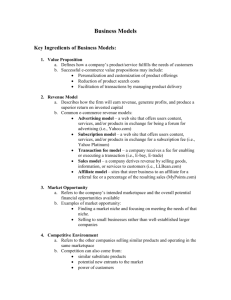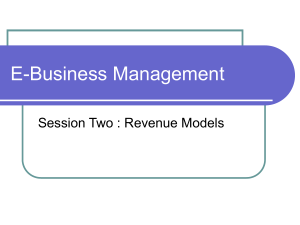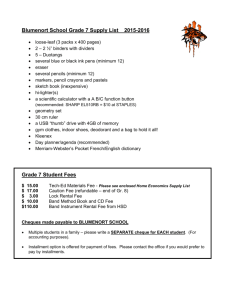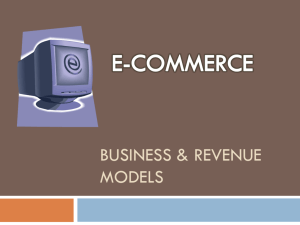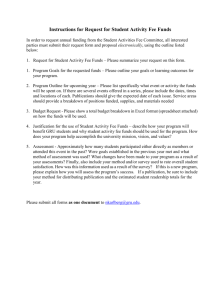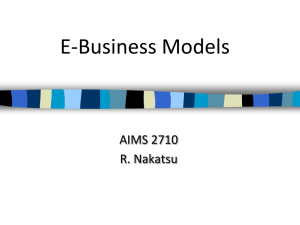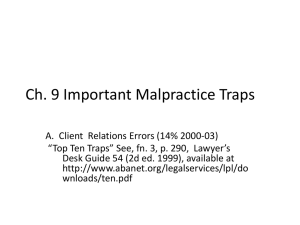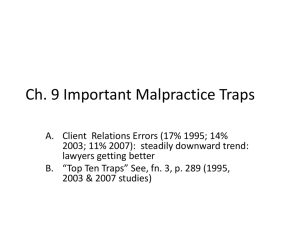Business Models 1
advertisement
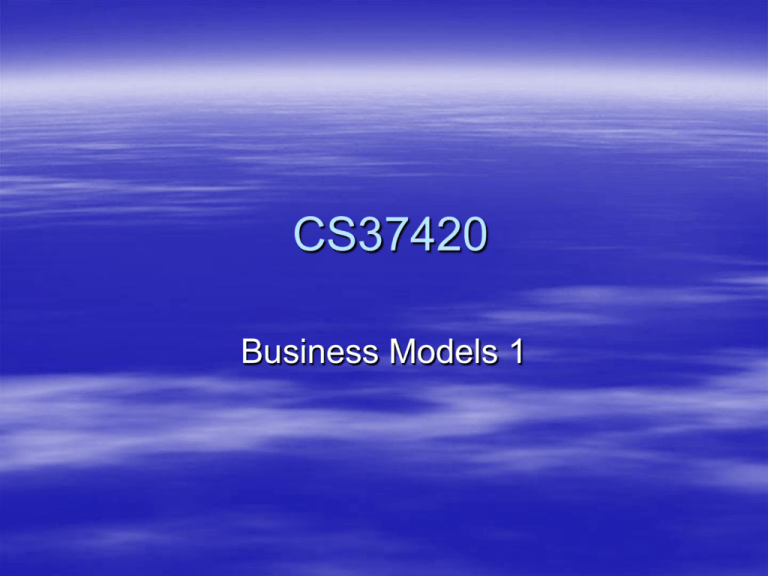
CS37420 Business Models 1 A set of planned activities designed to result in a profit In the market place Key Factors value proposition why buy revenue model earn money market opportunity what market space market strategy promotion and attraction competitive environment other competitors competitive advantage what advantage organisational structure necessary structure management team what experience etc 2 Value Proposition The heart of the business model: defines how the product/service fulfils needs; defines why the customer will choose you; the offering is personalised and customised; reduced costs ; facilitation of transactions - payments etc.; reliable and quick delivery services. e.g. Amazon offers: convenience - 24 hours a day comfort of own home (no trip to shops) book in stock ( a shop can hold only so many ) good price and quick delivery 3 Revenue or Financial Model How to : earn revenue generate profit produce a superior return on invested capital above all greater than alternative investments e.g. a retailer buys and sells and makes an operating profit he also needs to make enough profit to cover the capital (loan or savings) needed to start up and keep the business going and growing. 4 Ways of getting income advertising subscription transaction fee sales affilliate or referral 5 Sources of income Advertising A firm provides a forum for advertisements and receives a fee from advertisers. Initially very popular - then decline – now rising. Still a primary source of revenue Subscription A web site charges a fee for access to content or services. Usually high value premium offering, not readily available elsewhere, e.g. consumer reports on line, newsletters, newspaper crosswords etc. 6 Sources of income Transaction fees a fee for enabling or executing a transaction e.g. eBay created an online auction marketplace and charges a fee from the seller when the sale is made; e.g. E-Trade - a fee for a stock transaction Sales selling goods , information , or services, e.g. Amazon – books, music, videos, antiques etc; e.g. Doubleclick - information; Salesforce – sales management services Affiliate the site steers business to an affiliate and receives a referral fee or percentage of the revenue from a sale, e.g. Plane tickets, electronics via Kelkoo, Google Adwords 7 Market Opportunity A company’s intended market space and the potential financial opportunities available, usually a series of smaller market niches but, realistically, only some of the niches. Example: a software training company that writes software learning systems and sells them to companies. The market size of this niche is estimated at $100 billion. A small company cannot compete with large brand names selling to big companies, so aims at thousands of small businesses – a niche worth some $10 billion. 8 Market Strategy The plan which details how one intends to enter a new market and attract new customers, basically promoting one’s products and services Examples:Faster/better search engine - Google Yahoo invested heavily in advertising to tell the public about its site; AOL used sampling - sent out millions of CDs with a free trial offer in magazines and newspapers. Use of TV to advertise (Comparethemeerkat.com) 9 Competitive Environment Refers to other companies selling similar products or services in the same market space. Several questions:how many competitors? how large are their operations? what market share has each? how profitable are they? how do they price their products? is the market saturated or untapped or what status? 10 Competitive Advantage First mover advantage first into market place with a serviceable product or service; develop a loyal following, with something difficult to imitate most first movers lack resources. Amazon is an excellent example of a first mover & an exception in not lacking resources. In a perfect market all firms have equal access to all the factors of production including information and knowledge. Real markets are imperfect, competition is usually asymmetrical. Most competitive advantages are short term; some, however, go on for a long time e.g.Coca Cola. 11 Competitive Advantage Produce a superior product or service or bring it to market at a lower price Possible factors: differential access to the factors of production favourable terms from suppliers, shippers, labour etc more experienced staff - better managers a patent that others cannot imitate access to investment capital brand name or popular image. 12 Organisation Functional areas (classical) production transport marketing finance human resources customer support 13 Management perhaps the most important element required to make the business model work; a strong team is necessary for credibility; market – specific knowledge is required but – generalists to start; ability to change the model or redefine it; major weakness in initial e-commerce was lack of experienced management. 14 Business Models Comments many different kinds – many overlaps broad definitions have been chosen, categorised by general type of ecommerce companies will normally operate one kind of business model (at least to start ) but some use multiples, e.g., eBay is C2C and B2C 15
